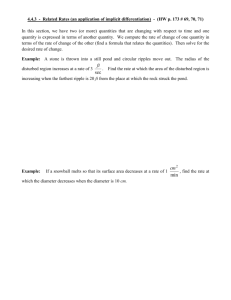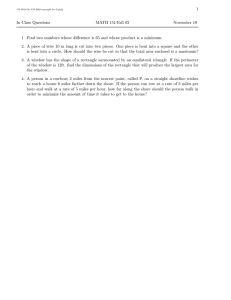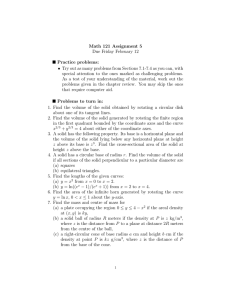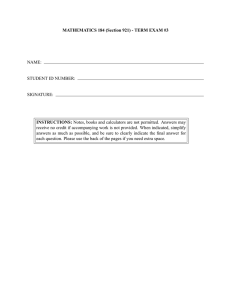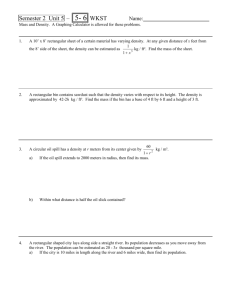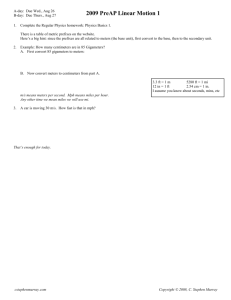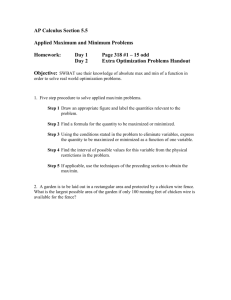3.10 - Related Rates In this section, we have two or more quantities
advertisement
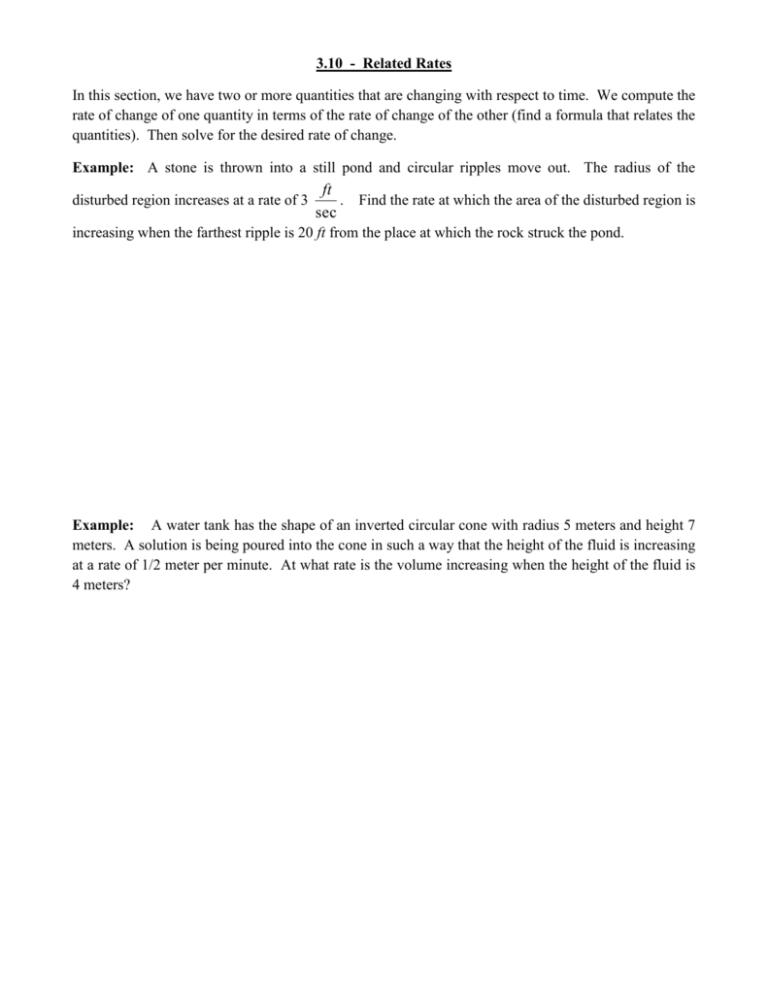
3.10 - Related Rates In this section, we have two or more quantities that are changing with respect to time. We compute the rate of change of one quantity in terms of the rate of change of the other (find a formula that relates the quantities). Then solve for the desired rate of change. Example: A stone is thrown into a still pond and circular ripples move out. The radius of the disturbed region increases at a rate of 3 ft . Find the rate at which the area of the disturbed region is sec increasing when the farthest ripple is 20 ft from the place at which the rock struck the pond. Example: A water tank has the shape of an inverted circular cone with radius 5 meters and height 7 meters. A solution is being poured into the cone in such a way that the height of the fluid is increasing at a rate of 1/2 meter per minute. At what rate is the volume increasing when the height of the fluid is 4 meters? Example: If a snowball melts so that its surface area decreases at a rate of 1 cm 2 , find the rate at min which the diameter decreases when the diameter is 10 cm. Example: A trough is 10 feet long and its ends have the shape of isosceles triangles that are 3 feet across the top and have a height of 1 foot. If the trough is filled with water at a rate of 12 cubic feet per minute, how fast is the water level rising when the water is 6 inches deep? Example: A storm is 50 miles offshore and its path is perpendicular to a straight shoreline. It is approaching the shore at a rate of 4 mph. A van traveling along the shoreline wants to stay exactly 50 miles from the storm and remain on the shoreline. Find the speed of the van when the storm is 40 miles from the shore.
